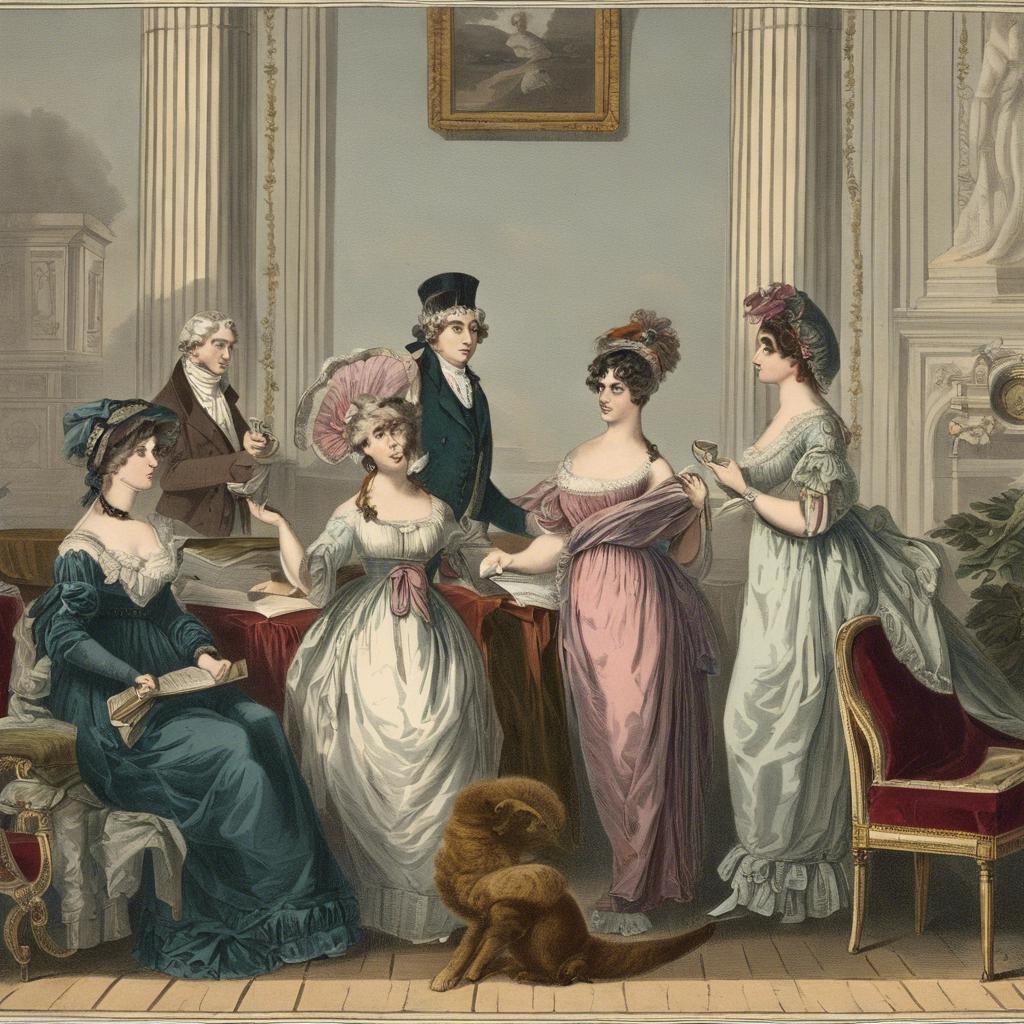During the Regency era in Britain, proper pronunciation was not just a matter of etiquette, but a reflection of one’s social status and education. In this article, we will explore the nuances of Regency era pronunciation and delve into the linguistic trends and influences that shaped the way people spoke during this fascinating period in history. Join us as we journey back in time to uncover the secrets of the language of the Regency elite.
Step Into the World of Cheryl Bolen
Dive into the enchanting stories of love, intrigue, and elegance set in the Regency Era. Cheryl Bolen's novels offer timeless romance and captivating tales that will leave you wanting more.
Explore Cheryl Bolen's Books Now
Overview of Regency Era Pronunciation
The Regency Era was a fascinating period in English history, known for its distinctive language and pronunciation. During this time, the way words were spoken differed significantly from modern English. Understanding Regency Era pronunciation can provide valuable insights into the culture and society of the time.
Key Features of Regency Era Pronunciation:
- Th-fronting was common, leading to the pronunciation of “think” as ”fink” and “mother” as ”muvver”.
- Words ending in -ing were often pronounced with a hard “g”, such as “dancin’ ” instead of “dancing”.
- The long “a” sound was pronounced as in “father”, rather than the modern pronunciation as in “mad”.
Impact of Regency Era Pronunciation:
- Understanding Regency Era pronunciation can help in interpreting literature and documents from the period with greater accuracy.
- It can also enhance historical reenactments and theatrical performances set in the Regency Era, providing a more authentic experience for audiences.
Emphasis on Elocution and Modulation
In the Regency era, was of paramount importance. Proper pronunciation and clear enunciation were considered essential skills for individuals of high social standing. Elocutionists were often sought after to improve one’s speech, as the way one spoke was seen as a reflection of their education and breeding.
Modulation, or the variation in tone, pitch, and pace, was also a key aspect of effective communication during this time. It was believed that a well-modulated voice could captivate an audience and convey emotions more effectively. Skills in modulation were often honed through practice and training with speech coaches.
For those seeking to improve their elocution and modulation skills in the modern day, studying the practices of the Regency era can provide valuable insights. By mastering the art of clear pronunciation and effective modulation, individuals can enhance their communication skills and make a lasting impression in both personal and professional settings.
Important Features of Regency Era English Pronunciation
During the Regency Era in England, English pronunciation had distinct features that set it apart from modern-day English. One key feature was the pronunciation of vowels, with a more pronounced use of the long vowel sounds compared to today. Additionally, the pronunciation of certain consonants, such as the letter “r”, was more prominent and rolled in the Regency Era.
Another important aspect of Regency Era English pronunciation was the emphasis on proper diction and enunciation. The upper class and aristocracy of the time placed a high value on speaking clearly and eloquently, with a focus on precise articulation of words. This attention to detail in pronunciation was a hallmark of social status and refinement during this period.
Furthermore, regional accents played a significant role in Regency Era English pronunciation. Different parts of England had distinct accents and dialects, which were influenced by factors such as social class, geographic location, and historical influences. Understanding these regional variations in pronunciation is key to appreciating the diversity of language during the Regency Era.
Tips for Learning and Practicing Regency Era Pronunciation
When learning and practicing Regency Era pronunciation, it is important to focus on the nuances of the time period. Follow these tips to refine your speech and immerse yourself in the language of the regency era corset”>early 19th century:
- Emphasize the use of Received Pronunciation (RP), the standard accent of England during the Regency Era. Pay attention to the clear enunciation of vowels and consonants.
- Study the works of Jane Austen and other authors from the period to familiarize yourself with the vocabulary and phrasing commonly used at that time.
- Practice speaking aloud, mimicking the speech patterns and intonations of the era. Record yourself to track your progress and make adjustments as needed.
Additionally, consider seeking out resources such as audiobooks or recordings of Regency Era speeches to further enhance your understanding and fluency in the pronunciation of the time. Immerse yourself in the language and culture of the Regency Era to truly master the art of speaking like a true 19th-century gentleman or lady.
| Tip: | Practice |
|---|---|
| Utilize RP | Focus on Received Pronunciation |
| Read | Study works of Jane Austen |
| Listen | Find recordings of Regency Era speeches |
In Conclusion
the study of Regency era pronunciation offers a fascinating glimpse into the linguistic nuances of the past. By exploring the phonetic shifts and accents of this time period, we gain a better understanding of the way language has evolved over the centuries. As we continue to delve into the linguistic history of the Regency era, we uncover a rich tapestry of sounds and dialects that have shaped the way we communicate today. Through the meticulous study of pronunciation, we can truly appreciate the beauty and complexity of language in all its historical glory.


